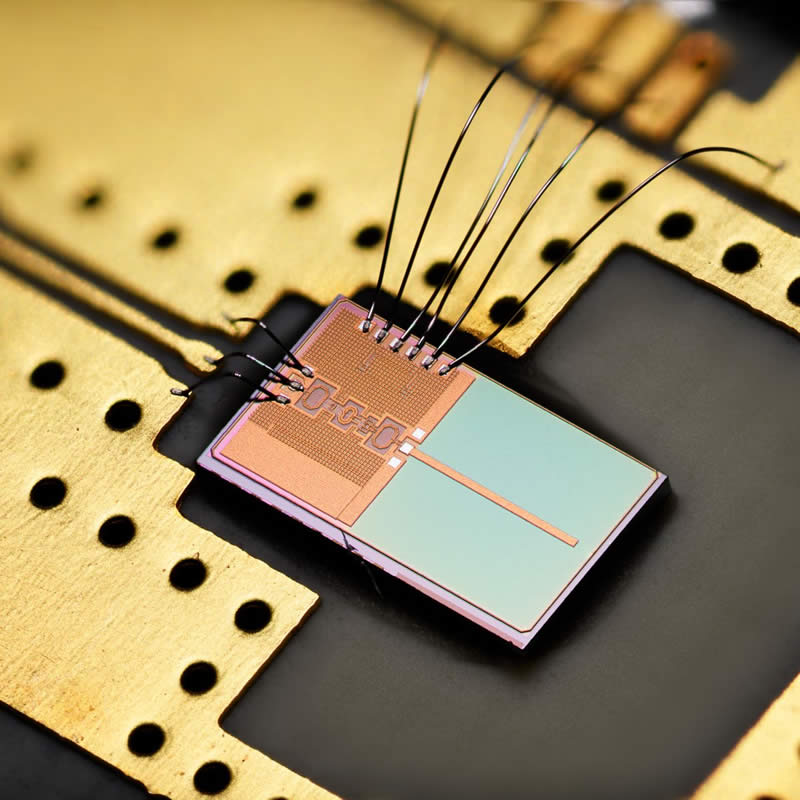RF and millimeter-Wave Circuit Design
About This Course
This unique Master-level course offered by the Center for Wireless Technology Eindhoven (CWT/e) of the Eindhoven University of Technology, The Netherlands, provides students with in-depth knowledge and hands-on experience on RF and mmWave circuit design.
The course covers the topics on how to derive the RF wireless systems specifications, and how to design the main building blocks of a transceiver, i.e., low noise amplifier, power amplifier, RF mixers, oscillators, and PLL frequency synthesizers. It is divided into two parts: (1) theoretical lectures will cover the basis of RF and mmWave Circuit Design; and (2) design labs will include simulation and implementation of these circuits. The design labs are completely optional for obtaining the certificate, but they are recommended because they allow students to put into practice all the acquired theoretical knowledge, and of course, implementing the circuits is where all the fun is! The students will be able to do 70% of the design labs using simulation tools, which already offers a great learning experience. The other 30% will require students to either get access to an electronics lab or to purchase a few off-the-shelf components. But ultimately, this would allow students to design and build their own transceiver at home! The course contains theoretical video classes with examples, quizzes, and an entire set of simulation files, step-by-step procedures, recorded data of real-life circuits, and solution videos so that students can learn from and build even better circuits.
Course Syllabus
- Introduction to RF & mm-Wave Circuit Design Course
- This module will introduce the student to the RF and mm-Wave Circuit Design course and to the topic of wireless systems. It will present the learning objectives, grading system, supporting material, introductory class, and design labs. Besides, it will show the student how to use the simulation tools and the equipment used in the design labs.
- Wireless Systems
- The module on Wireless Systems will introduce the student to the history of wireless technologies, wireless system design, and RF system specifications. Concepts about transceivers will be detailed, such as path loss, interference signals, receiver sensitivity, and transmitter output power. It also includes the first design lab, the system design of a Wireless Tin Can Telephone.
- Amplifiers
- The Amplifiers module will introduce the student to the basic concepts of amplifiers, types of power gain, and the most used amplifier topologies. The student will also learn about low noise amplifier matching and power amplifiers classes. The second design lab will focus on designing LNAs and PAs.
- Mixers
- The Mixers module will introduce the student to the working principle of RF mixers and their basic concepts. The difference between active and passive mixers will be explained, the advantages and drawbacks of balanced and unbalanced mixers will be detailed, and the mixer’s noise performance highlighted. The third design lab will cover the design of up and down-conversion mixers.
- Oscillators
- The Oscillators module will introduce the student to the working principles of frequency oscillators and their basic concepts, like condition to sustain an oscillation. The student will learn about different topologies of oscillators, why and how to tune oscillators, and the impact of noise in the oscillator’s signal. At last, the influence of output buffering and breakdown voltage on oscillators will also be explained. The fourth design lab will focus on designing a Voltage Controlled Oscillator (VCO).
- Synthesizers
- The Synthesizers module will introduce the student to the working principles of frequency synthesizers and their basic concepts. The student will learn about the importance of using synthesizers in modern wireless communications, the Phase-Locked Loop types I and II, the advantages and drawbacks of using All-Digital PLL, and the impact of the PLL frequency synthesizer on the signal’s noise performance. At last, the architecture and usage of fractional-N PLL frequency synthesizers will be detailed. The fifth and last design lab will contain the design of a frequency divider and a phase detector.
- Introduction to RF & mm-Wave Circuit Design Course
Course presenters

Peter Baltus
Prof. dr. ir.
- Eindhoven University of Technology

Carlos Mendes, Jr.
Dr.
- Eindhoven University of Technology
FAQ
What is Coursera?
Coursera is an online education provider that offers online courses, popularly known as MOOCs or Massive Open Online Courses, from top universities around the world. Currently it has over 200 partners from 48 countries. These partners include Universities such as Stanford, Duke, Penn, Princeton, Michigan, Peking, and HEC Paris. Coursera has also started partnering with companies like IBM, Google, and PwC — these companies are also launching courses on Coursera.
Coursera is the most popular MOOC provider in the world based on the number of students (over 45 million learners) and has an active catalog of 3,800+ online courses.
As well as these individual courses and 16 online degrees, Coursera offers 400 groups of courses known as Specializations, MasterTracks, and Professional Certificates.
How do Coursera courses work?
Coursera is an online education provider that offers online courses, popularly known as MOOCs or Massive Open Online Courses, from top universities around the world. Currently, Coursera boasts an active catalog of more than 3800 online courses created by these partner institutions.
Coursera courses consist of pre-recorded video lectures that you can watch on a weekly schedule or when it’s convenient for you. They also have student discussion forums, homework/assignments, and online quizzes or exams.
Generally speaking, Coursera courses are free to audit (i.e. watch videos) but if you want to earn a course Certificate, you will need to pay. An investigation by Class Central discovered 1150+ Coursera courses that include assessments for free although other courses have the assessments behind a paywall.
Many of the Coursera courses are part of Coursera Specializations, a microcredential offered by Coursera. Specializations consist of a sequence of courses and for some Specializations the last course is a Capstone project. If learners earn a certificate for each course in a Specialization, they will receive a Specialization certificate. Specializations are usually geared towards in-demand skills in business and technology. You can take single courses or the whole specialization.
Other courses are grouped into MasterTracks and Professional Certificates. Coursera has launched over 400 microcredentials.
How does a Coursera Subscription work?
Some courses, particularly those in Coursera Specializations, are available on a subscription basis. When you sign up, the first 7 days are free, then you are charged monthly. Check the course or Specialization page to find the cost in US dollars or your local currency. You may also need to check the exchange rate to calculate the cost. The faster you learn, the less you will pay to complete the course or Specialization, in one-month increments.
If you want to complete one or some courses in a Specialization but not the whole Specialization, you need to cancel your subscription after receiving your certificate.
When signing up for Specializations, you cannot select the audit for free option, only a 7-day free trial. To access the materials for free, you need to sign up from the individual course pages. Click on the Learn more link beside the words at the bottom of each course description, available on some Specialization pages. (You can choose to take this course only.)
Coursera Plus is a single payment that gives access to around 3000 courses and Specializations for 12 months.



